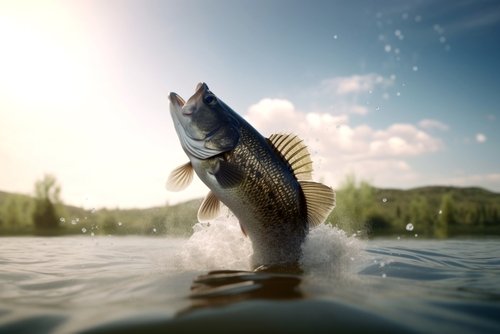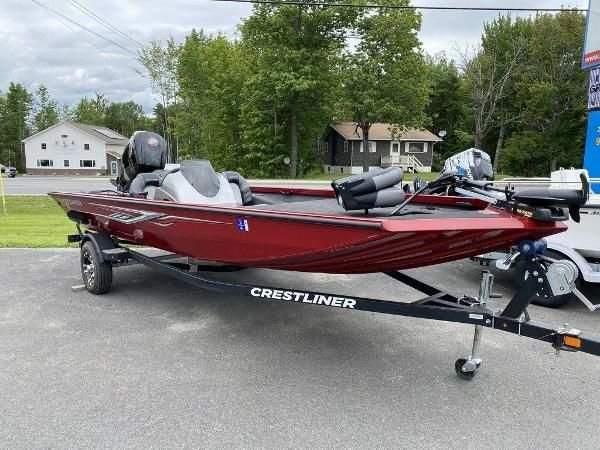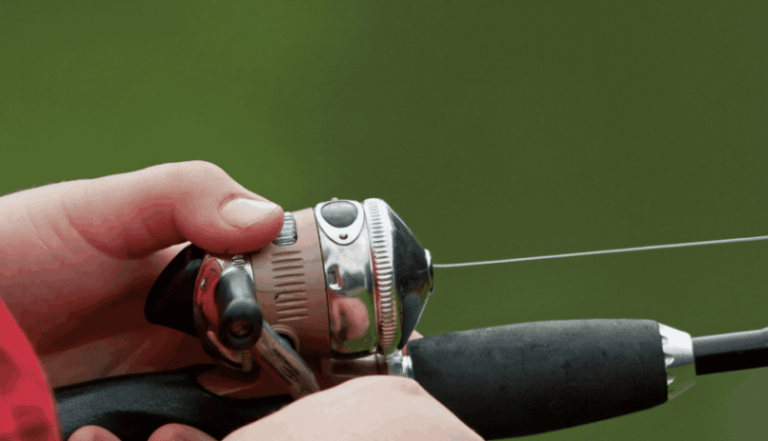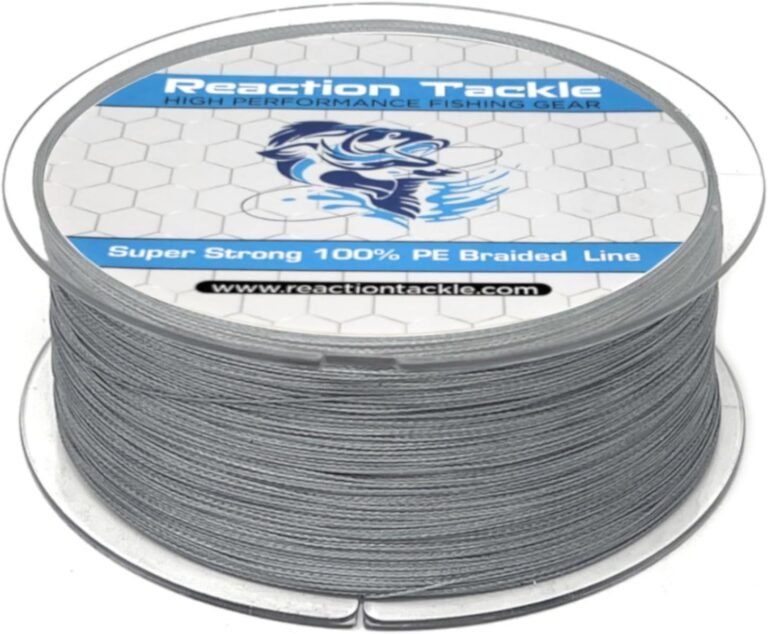Largemouth bass are renowned for their impressive size and distinct physical features. When hooked they fight hard, giving the angler an adrenaline rush. Want to know how to catch largemouth bass? Let’s go!
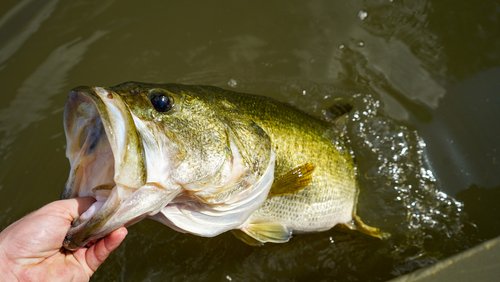
The huge mouth on this fish gives them their common name, largemouth bass. Other notable physical features include a jagged dorsal fin with sharp spines and a dark horizontal line along each side of the fish’s body.
This line is called the “lateral line” and is an invaluable sensory organ for detecting movement and vibration in the water. Additionally, largemouth bass have intricate patterns of dark blotches or vertical bars on their sides that act as camouflage against predators or prey.
Life Cycle and Seasonal Behavior Patterns
Understanding largemouth bass’s life cycle and seasonal behavior patterns is crucial for successful fishing endeavors. The reproductive cycle typically begins in spring when water temperatures reach around 60 to 65 degrees Fahrenheit (15-18 degrees Celsius).
During this time, male bass constructs circular nests by clearing debris from shallow areas near cover, such as submerged vegetation or fallen logs. Females then lay eggs within these nests while males guard them until they hatch after several days.
Once hatched, young fry rely on protection from both parents until they grow larger and independent enough to venture out independently. As for seasonal behavior patterns, largemouth bass exhibit different habits depending on environmental conditions.
They tend to be more active and aggressive in warmer months due to increased metabolism. They become more willing to chase down fast-moving lures, or attack surface baits like topwater frogs or poppers.
However, their metabolism slows down during colder months, and they become less active. They seek deeper water or covered areas, such as submerged structures and vegetation.
During this time, slow-moving presentations like jigs or soft plastics become more effective in enticing strikes. Understanding largemouth bass behavior allows anglers to adapt their techniques accordingly, increasing the chances of a successful catch.
Selecting the Fishing Rod, Reel, and Line for Bass Fishing
Finding the right fishing equipment is crucial when pursuing the elusive largemouth bass. A well-balanced rod and reel combination will allow anglers to cast accurately, detect subtle bites, and handle the powerful strikes of these prized game fish.
When selecting a fishing rod, it is essential to consider its power and action. A medium to medium-heavy power rod with fast or extra-fast action is recommended for largemouth bass fishing.
This provides enough backbone to handle the fight while maintaining sensitivity for bite detection. As for the reel, a baitcasting reel is often favored due to its ability to cast accurately and offer better control over lure presentation.
Regarding lines, fluorocarbon or braided lines are popular choices. Fluorocarbon offers low visibility underwater and excellent sensitivity, while braided lines provide exceptional strength and durability.
Types of Lures and Bait that Attract Largemouth Bass
The art of enticing largemouth bass is understanding their lures and bait selection preferences. Anglers should aim to imitate natural prey items that bass commonly feed on in their habitat.
One type of lure that has proven effective in enticing largemouth bass is topwater lures. These lures include realistic frog imitations that mimic frogs hopping across the water’s surface, poppers that create enticing splashes, and buzz baits that create vibrations on the retrieve, mimicking wounded prey struggling on the water’s surface.
Another category of lures worth exploring are crankbaits—diving plugs designed to mimic injured baitfish moving erratically underwater or lipless crankbaits capable of imitating a dying shad with their lifelike wobbling action during retrieval. When it comes to soft plastics for largemouth bass fishing, there are several versatile options.
Worms, both straight-tail and curly-tail varieties, are a go-to choice for many anglers. These soft plastics can be rigged in various ways, such as Texas or Carolina rigging, and their lifelike wriggling action entices bass into striking.
Crawfish imitations are another effective option—designed to mimic the natural movements of these bass-preferred crustaceans. Swimbaits have gained popularity recently due to their lifelike appearance and realistic swimming action.
These soft-bodied lures can be retrieved steadily or with intermittent pauses to mimic injured baitfish. With the right selection of lures and bait, anglers can tap into the predatory instincts of largemouth bass, increasing their chances of a successful catch.
Identifying Ideal Habitats for Largemouth Bass
Lakes: Natural vs Man-Made Reservoirs
Lakes are prime locations for large-mouth bass fishing, offering vast areas where these formidable predators can thrive. When considering lakes as potential habitats, it’s crucial to differentiate between natural lakes and artificial reservoirs. Natural lakes tend to have a more diverse ecosystem with varying depths, submerged vegetation, rocky structures, and fallen trees that provide ample cover for largemouth bass to seek shelter and ambush their prey.
On the other hand, artificial reservoirs often lack the same level of natural structure but can still offer viable bass fishing opportunities. Understanding the preferred structures and covers within the lake is essential in both cases.
Largemouth bass typically seek out submerged vegetation like lily pads, hydrilla beds, or grass as feeding grounds and cover spots. Additionally, they frequent areas near rocks or fallen trees where they can hide and wait to strike at passing prey.
Ponds: An Awesome Opportunity
Ponds present an excellent opportunity for anglers seeking largemouth bass in a more contained environment. Vegetation plays a crucial role in pond ecosystems, providing food sources such as insects and small baitfish for largemouth bass.
Areas with abundant submerged or emergent vegetation, like water lilies or cattails, are highly attractive to these fish. Moreover, ponds typically exhibit depth variations that create zones suitable for largemouth bass at various times of the year.
During warmer months, when oxygen levels decrease near the surface due to high temperatures, deeper sections of ponds offer cooler water where large mouths may retreat to maintain their comfort. Similarly, understanding seasonal temperature changes helps identify where largemouth bass may congregate within a pond.
Rivers and Streams: Breaks, Eddies, and Ambush Points
Rivers and streams provide a dynamic fishing experience for those venturing into largemouth bass territory. Understanding the behavior of these fish in moving water is crucial to locating their prime hiding spots.
Current breaks, where the river’s flow slows down due to obstructions like rocks or fallen trees, are excellent areas to find largemouth bass. These breaks create eddies—circular currents that offer respite from fast-moving water—where bass can conserve energy while waiting for passing prey.
Additionally, they often utilize ambush points near structures such as submerged logs or overhanging vegetation where they can strike unsuspecting prey easily. It’s important to note that rivers and streams may require different fishing techniques than still-water habitats due to the constant motion and varying conditions.
By understanding the specific characteristics and preferences of largemouth bass in different types of water bodies, anglers can effectively target these elusive fish in their natural habitats. Whether it’s the diverse structures of lakes, the abundant vegetation and depth variations in ponds, or the current breaks and ambush points found in rivers and streams, each environment presents unique challenges and opportunities for successful largemouth bass fishing adventures.
Casting Techniques for Catching Largemouth Bass
Mastering different casting techniques is essential for success in largemouth bass fishing. Flipping and pitching are two popular methods to target bass hiding in heavy cover. Flipping involves quietly dropping your bait into tight spots such as thick vegetation or submerged logs using a short, controlled motion with minimal line release.
On the other hand, pitching allows you to make accurate casts precisely by extending your arm and releasing the line with a wrist flick. Another effective casting technique when fishing for largemouth bass is skipping lures under docks or overhanging trees.
This requires skillful coordination and accuracy to cast the lure so that it skips across the water’s surface, imitating a fleeing baitfish entering their territory. Long-distance casting is useful when you need to cover more water efficiently.
By employing this technique, you can reach distant targets such as submerged structures or specific areas of interest where large-mouth bass might be lurking. It requires proper rod selection and understanding how to generate power and distance with your cast while maintaining control over your lure.
Retrieval Techniques for Catching Largemouth Bass
How you retrieve your lure is crucial in enticing largemouth bass strikes. One effective retrieval technique is slow-rolling crankbaits along the bottom. This imitates injured prey struggling near the lake bed, making it irresistible to predatory bass.
Consistent reeling slowly allows the crankbait’s lip to dive deeper, creating enticing vibrations that trigger strikes. Jerking or twitching topwater lures can also effectively provoke aggressive strikes from largemouth bass.
You create a realistic action that mimics a struggling or fleeing prey by imparting sudden movements on the water’s surface using quick wrist jerks or twitches. This technique requires precision and observation to time the movements correctly and entice strikes.
Working soft plastics with various retrieves offers versatility when targeting largemouth bass. Jigging involves imparting an up-and-down motion to the lure by raising and lowering your rod tip.
This imitates a wounded baitfish or crawfish and can be particularly effective when used near submerged structures or deeper water. Experiment with different retrieve speeds, pauses, and twitches to find the most enticing presentation for your fishing conditions.
Conclusion
Mastering various casting and retrieval techniques is key to becoming a skilled largemouth bass angler. Flipping, pitching, skipping under docks, long-distance casting, slow rolling crankbaits along the bottom, jerking topwater lures, and working soft plastics with various retrieves provide an arsenal of strategies to outsmart these elusive freshwater predators.
You increase your chances of landing that trophy largemouth bass by honing your skills in each technique and consistently applying them in different situations while adapting to changing conditions. Remember to have patience, observe their behavior patterns closely, and never underestimate the allure of venturing into nature’s aquatic realm—where largemouth bass reigns.

